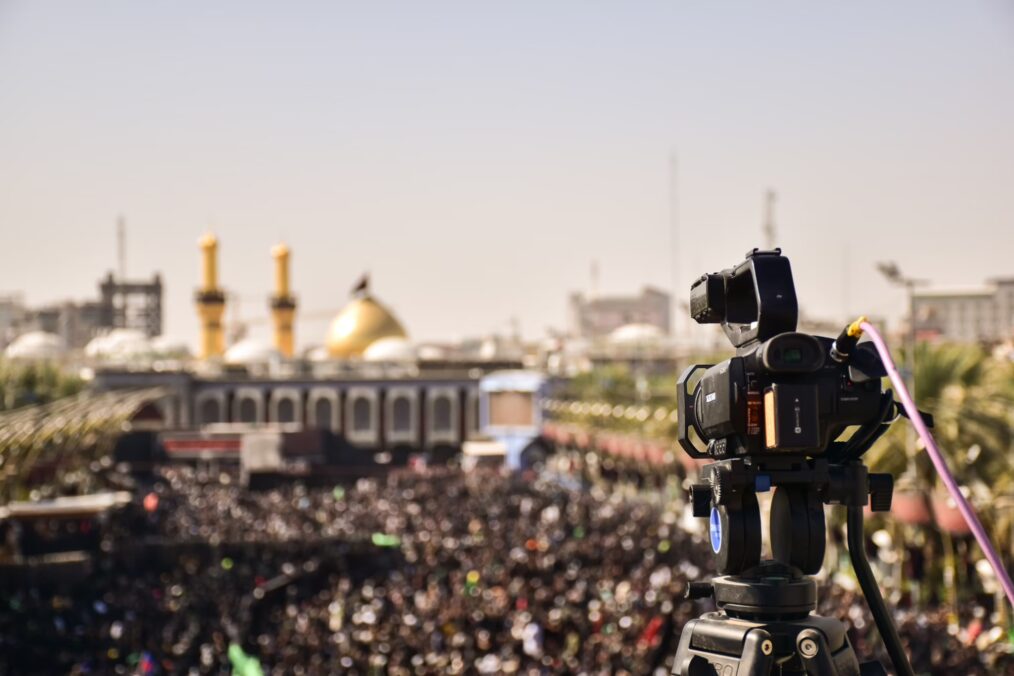
From Propaganda to Playbook: The Lasting Media Template of ISIS
Though the Islamic State, or ISIS, has long lost its territorial grip, the influence of its digital propaganda machine endures. At the height of its power, ISIS pioneered a sophisticated media strategy that transformed how terrorist organisations project influence, prioritising decentralisation, visual coherence, and emotional resonance to attract supporters and instil fear on a global scale. This communications model, while not unique to ISIS, has left a lasting imprint on the media operations of other jihadist movements. Recognising these patterns is not simply an exercise in retrospective analysis. As contemporary terrorist groups adopt similar techniques, understanding the architecture of ISIS’s media playbook offers a critical lens for identifying emerging threats. When narratives follow familiar contours, counterrorism efforts can respond not only to what is said, but to how and why it is said.
Platforms and Content
The Islamic State’s media strategy leveraged a range of platforms, including Telegram, X (previously Twitter), Facebook, YouTube, and TikTok. These platforms were crucial for spreading ISIS propaganda and recruiting new members, particularly among disenfranchised youth. Telegram, in particular, allowed ISIS to maintain encrypted communication and distribute a variety of content to its followers while evading censorship. TikTok, on the other hand, attracted a younger demographic, providing an avenue to disseminate short-form video that combined violent imagery with messages promoting martyrdom and jihad. An example of this can be seen in the case of L. Walby, a 19-year-old convert from Kent, UK, who posted ISIS propaganda videos on such platforms. According to the BBC, Walby, who had over 1.500 followers on TikTok and more than 10.000 likes on his posts, explained that he had ‘joined the trend’. This reflects a wider trend seen across social media where individuals, often younger, become part of an online subculture that glorifies extremism and terrorism. The videos Walby posted included graphic footage of combat scenes, executions, and martyrdom, aimed at normalising violence and encouraging others to embrace jihad.
Additionally, the Islamic State leveraged dedicated media outlets, such as Amaq News Agency and Al-Hayat Media Centre, to distribute its propaganda. These platforms produced high-quality content that reinforced ISIS’s ideological narrative. For instance, Amaq News Agency was central to ISIS’s communication strategy, offering real-time updates on operations and attacks, often glorifying these actions as part of a larger struggle against the West; while Dabiq was a digital magazine published in several languages, aimed at inspiring Muslim youth globally, urging them to join the caliphate. It presented a vision of a utopian Islamic state, promising a sense of belonging and purpose for those who joined. The strategic goal behind ISIS’s media framework has three key components: recruitment, intimidation, and legitimacy. The use of social media platforms was central to the group’s recruitment efforts, offering a sense of camaraderie and ideological purity to individuals who felt disconnected or marginalised. Intimidation was another key goal, These graphic materials were intended to instil fear and signal the group’s ruthless commitment to its cause. Finally, by producing highly polished, professional content in multiple languages and through diverse channels, ISIS sought to legitimise itself as the vanguard of a global Islamic struggle, rather than merely a terrorist group. This pattern is not isolated, and it highlights the potential for counterterrorism efforts to focus on identifying and disrupting the digital activities of such groups.
The Spread of a Template
The Islamic State’s digital blueprint has had a lasting impact well beyond its core territory, and its media strategy has served as a model for several jihadist groups operating in Syria, Afghanistan and parts of Africa. These groups have adapted and reinterpreted ISIS’s template to suit local contexts, but the core elements remain recognisable: strong branding, glorified portrayals of martyrdom, and the strategic use of social media to project legitimacy and reach a global audience.
In northern Syria, Hay’at Tahrir al-Sham (HTS) offers one of the clearest examples of aesthetic and narrative imitation. While distancing itself from ISIS ideologically, HTS has adopted similar media tactics to rebrand itself as a legitimate governing actor. Under the leadership of al-Jolani, the group has curated a public image centred on moderation and local governance. Its videos often show Jolani engaging with civilians, attending religious events, and meeting with local leaders; an imagery designed to soften perception and attract external legitimacy. This media campaign has included calculated outreach to Western audience, most notably through Jolani’s 2021 appearance on PBS Frontline. The visual polish and messaging coherence evoke the same media discipline pioneered by ISIS, albeit directed at different political ends.
In contrast, Islamic State Khorasan Province (ISKP), in Afghanistan, has pushed the model further. Following the Taliban’s return to power, ISKP has doubled down on online propaganda, using AI tools to produce and disseminate multilingual content through its media arm, Al-Azaim Foundation. These efforts aim to radicalise, recruit, and assert the group’s ideological purity in contrast to its rivals. Similarly, Jama’at Nusrat al-Islam wal-Muslimin (JNIM) in the Sahel has utilised media to bolster its narrative of religious legitimacy. Though seemly technologically less advanced, JNIM has borrowed from ISIS’s approach to visual propaganda, including footage of attacks and the imposition of conservative Islamic law in controlled areas.
Lastly, Islamic State West Africa Province (ISWAP), born from Boko Haram’s allegiance to ISIS, has closely followed the ISIS model in both tone and technique. Between 2016 and 2020, it released over 100 videos, often showing executions, attacks, and hostage situations. ISWAP has also made use of platforms like Telegram, YouTube, X, and encrypted messaging apps to distribute content, echoing ISIS’s emphasis on platform diversification and digital security.
Digital Arms Race
As jihadist groups have grown more agile in their use of digital platforms, states, institutions, and technology companies have scrambled to catch up; often reacting rather than anticipating. In the European Union, new legislation mandates that internet platforms remove terrorist content within one hour of a removal order, while specialised bodies like the EU Internet Referral Unit and the Radicalisation Awareness Network work to identify extremist narratives and support member states in mitigation. In the US, the Global Engagement Centre (GEC) has adopted a more decentralised approach, collaborating with community actors, former extremists, and religious leaders to deliver counter-narratives and build resilience in targeted communities. In the Middle East and North Africa (MENA) region, responses have largely followed a top-down securitised model, where state policies prioritise regime stability and ideological control. Here, counterterrorism strategies often blur the lines between legitimate dissent and violent extremism, creating a restrictive media environment that can inadvertently drive extremist narratives underground rather than dismantling them. Yet despite these developments, jihadist media strategies remain highly resilient. A constant cat-and-mouse dynamic characterises the digital battlefield: as content is removed from mainstream platforms, extremist groups shift to encrypted apps, decentralised networks, and cloud-based repositories. The adaptive use of language, hashtags, and platform migration techniques ensures that even as specific content is taken down, the propaganda architecture remains largely intact. Groups like ISKP and ISWAP not only pre-empt takedowns but often exploit the takedown process itself to frame narratives of persecution and legitimacy.
This enduring adaptability reveals a critical oversight in counterterrorism policy: the tendency to view jihadist propaganda as peripheral rather than central to insurgent strategy. The influence of ISIS’s model: high-impact visuals, multilingual messaging, and decentralised media production, remains visible across successor groups, even in regions with limited connectivity or state presence. This digital legacy matters precisely because it has become a strategic blueprint. Its methods are easily replicated, widely disseminated, and difficult to erase. Graphic content, algorithmic optimisation, and culturally tailored messaging can be deployed by both major organisations and lone actors, allowing terrorist ideology to persist and mutate even in the absence of territorial control.
Ultimately, a reactive approach to extremist content moderation is no longer sufficient. What is needed is a proactive, systemic understanding of jihadist media strategy; one that anticipates its evolution, counters its appeal, and treats the information space not as an auxiliary front, but as a core battleground in contemporary terrorism.
Charlotte Soulé, Rise to Peace Contributor and Masters of International War Studies student at University College Dublin

